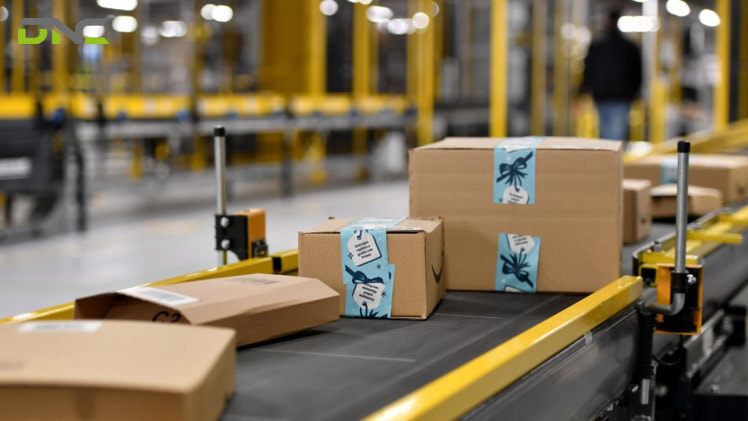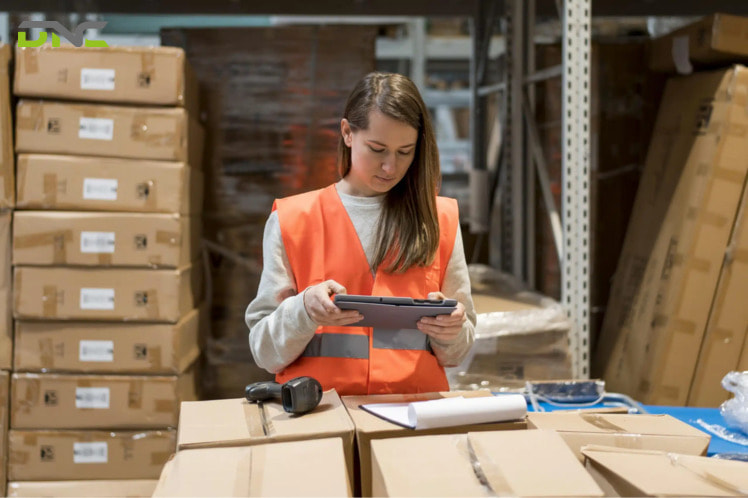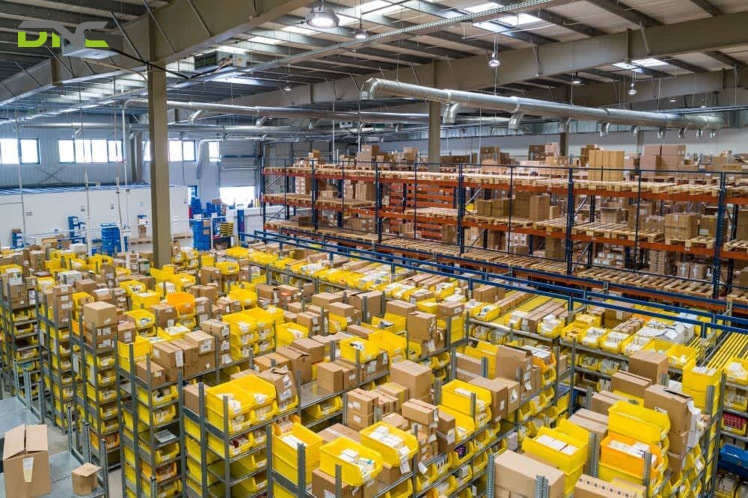What is Ecommerce Warehouse? Benefits, Classification and Automation Process?
In e-commerce, speed and accuracy are vital factors. That is why more and more businesses are applying warehouse automation to optimize operations and improve customer experience. The following article by DNC Automation will help you understand the whole picture of automation solutions in e-commerce warehouses.
What is an e-commerce warehouse?
E-commerce warehouse automation is the process of using technology, machines and software to replace or support humans in the activities of storing, processing and transporting goods in e-commerce warehouses.
Instead of manual management, automated warehouse systems can handle tasks such as:
- Importing and exporting goods
- Checking inventory
- Packing and sorting orders
- Moving goods with robots or conveyor belts
- Syncing data with e-commerce platforms and management software
Automation helps speed up order processing, reduce errors, save costs and optimize warehouse space – vital factors in the e-commerce industry, which is highly volatile.
How many types of ecommerce warehouses are there?
Depending on the size, business goals and available resources, businesses can choose from many different types of warehouses. Below are the 6 most popular types of eCommerce warehouses today that you should know.
Leased Warehouses
A leased warehouse is a popular model in which an e-commerce business rents warehouse space from a third party to store goods. This form is suitable for businesses with a stable amount of goods but not enough capacity to invest in their own warehouse.
Warehousing from Home
This is an ideal choice for small businesses or individuals who are just starting out. The seller will use part of the space in the house such as the garage, spare room to store and package products. Although cost-effective, this model is limited in space and the ability to handle large orders.
Fulfillment Centers or Distribution Centers
This is a warehouse model operated by third parties, specializing in handling the entire process from storage, packaging to delivery.
E-commerce businesses send goods here and all order processing operations are automated, saving time and improving customer experience.
On-demand Warehousing Solutions
On-demand warehouses allow businesses to rent flexible storage space according to specific times and areas. Through digital platforms, they can quickly find warehouses near customers to reduce shipping costs.
Bonded Warehouses
Bonded warehouses are places to store imported goods that have not paid taxes. Businesses can keep goods here until completing customs procedures.
This model is suitable for international eCommerce businesses, helping to optimize costs and time in the global supply chain.
Dropshipping
With the dropshipping model, businesses do not need to own warehouses. When there is an order, the supplier will directly pack and deliver the goods to the customer. This helps reduce operating costs, but the business must accept the risk of product quality and delivery time due to lack of direct control.

6 most popular types of eCommerce warehouses today
How does the eCommerce warehouse automation process work?
Automation not only helps the warehouse operate faster but also significantly reduces errors. So how does the automation process in the eCommerce warehouse work? Here are 5 basic steps in the e-commerce warehouse automation process:
Step 1: Receiving input goods (Inbound Logistics)
- Barcode system, RFID or QR scanner supports recording goods entering the warehouse.
- The system automatically classifies and transfers goods to the appropriate storage area using conveyors or AGV robots.
Step 2: Storing goods (Storage)
- Use smart shelves, automated storage systems (AS/RS – Automated Storage and Retrieval System) to optimize space.
- Warehouse management software automatically allocates goods locations according to the frequency of shipments.
Step 3: Order Processing
- When there is an order, the WMS (Warehouse Management System) automatically determines the location of the goods.
- Robots or employees will perform picking according to the instructions from the system.
Step 4: Packing & Labeling
- Automatic packaging lines are integrated to classify and package each order.
- The system prints bills of lading in sync with delivery partners.
Step 5: Outbound Logistics
- Goods are automatically transferred to the shipment area.
- The system updates order status in real time for customers and administrators.

5 basic steps in the e-commerce warehouse automation process
Why is e-commerce warehousing important?
E-commerce warehousing plays a key role in the entire supply chain of online businesses. Here are the main reasons why eCommerce warehousing is important:
- Ensure order processing speed: A scientifically organized warehouse system will help shorten order processing time, from picking, packing to delivering to the shipping unit.
- Effective inventory management: Accurate inventory storage and tracking helps businesses avoid sudden stockouts, limit long-term inventory causing waste and easily plan appropriate import plans
- Optimize operating costs: A well-organized warehouse helps save on rental costs, labor and order processing time.
- Increase scalability: As the business grows, the number of orders increases, a well-organized warehouse system will easily adapt and expand without interrupting operations.
- Competing with speed and experience: E-commerce giants like Amazon and Alibaba have applied powerful warehouse automation to shorten delivery times – thereby setting new standards for the entire industry.
Which businesses have succeeded with eCommerce warehouse automation?
Although warehouse automation can be challenging, in fact, many businesses have successfully implemented it and achieved impressive results. So which are the typical names that have effectively applied eCommerce warehouse automation?
- Amazon: Amazon uses tens of thousands of Kiva robots to support picking and shipping in the warehouse, reducing order processing time to just a few minutes. Thanks to that, they can maintain fast and accurate delivery speeds globally.
- Alibaba: Alibaba invests heavily in AI and robots to optimize the storage and order processing process. Their smart warehouse system can process more than 1 million orders per day during peak times.
- Shopee: Shopee builds an integrated operations center with an automated sorting and processing system to shorten the time from ordering to delivery in major cities.

Which businesses have succeeded with eCommerce warehouse automation?
Where to buy a reputable e-commerce warehouse?
If you are uncertain about where to purchase a e-commerce warehouse, DNC Automation is an excellent option for you. Many customers have trusted DNC to provide automation solutions in the production process and have had positive experiences because:
- DNC is a leading technology, automation, and engineering company in Malaysia with over 15 years of experience in the field of automation
- System integration machinery, Internet of Things (IoT), Industry 4.0, and WinCC Scada System
- Diverse designs and sizes are suitable for many domestic and foreign houses. The equipment is 100% genuine and imported from Malaysia.
Please contact us via the hotline below if you have any questions about the product, we are happy to answer you!
- 4 views
- 0 Comment




Recent Comments